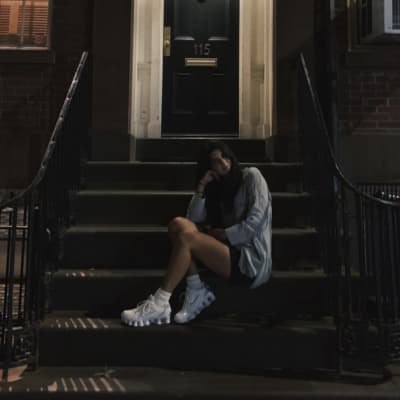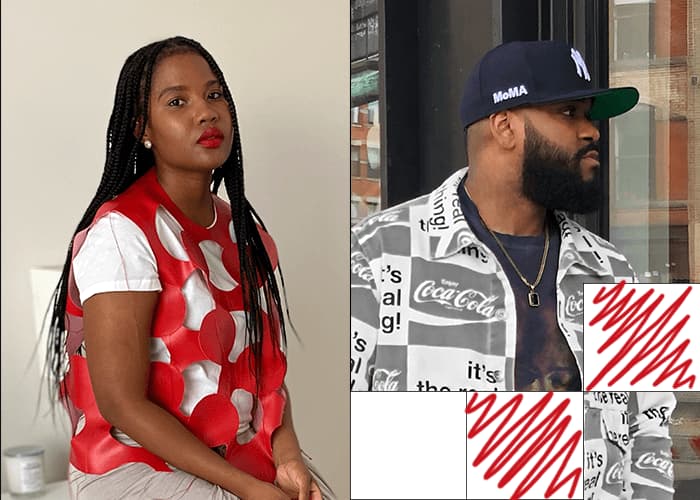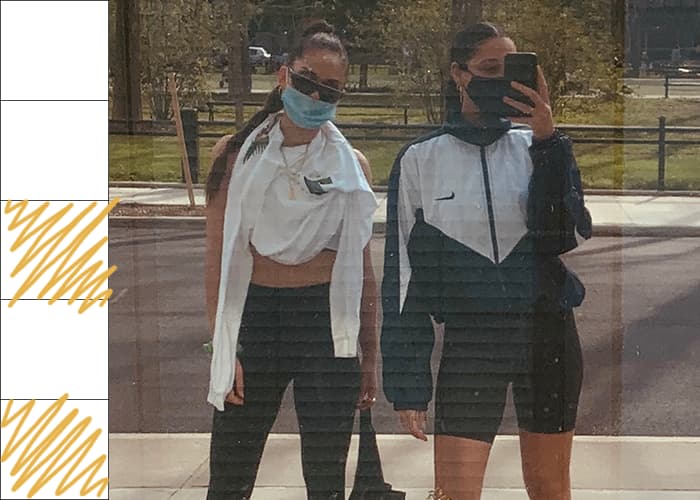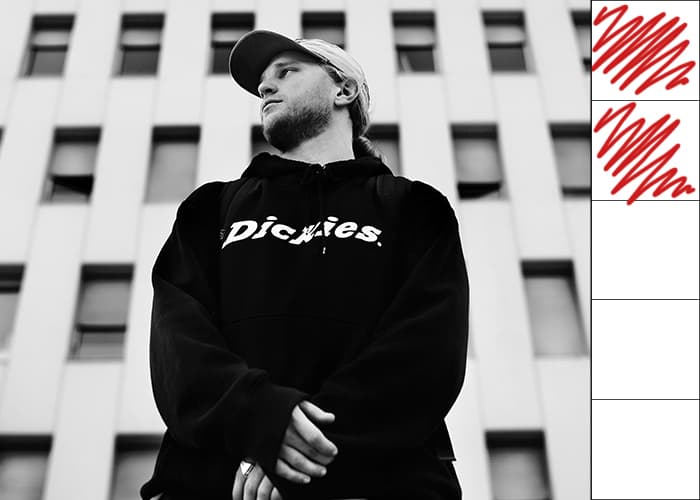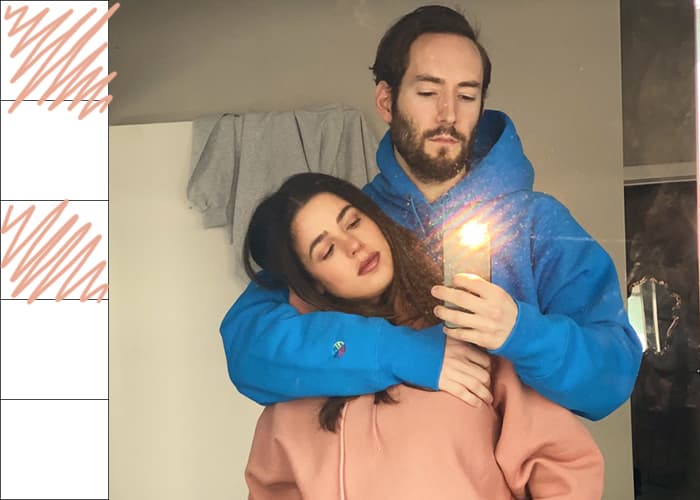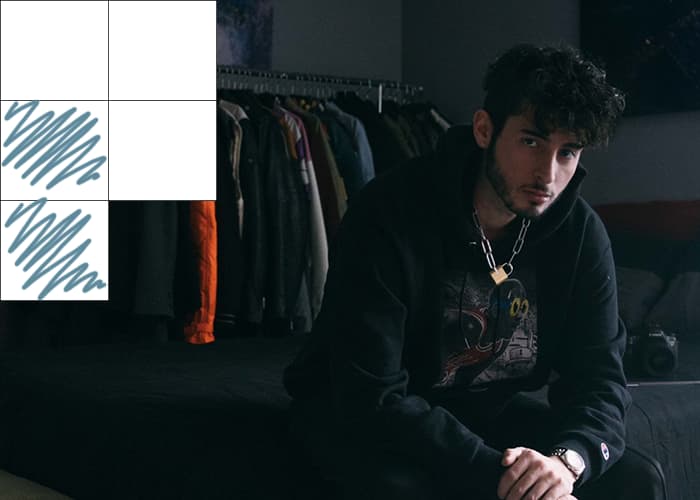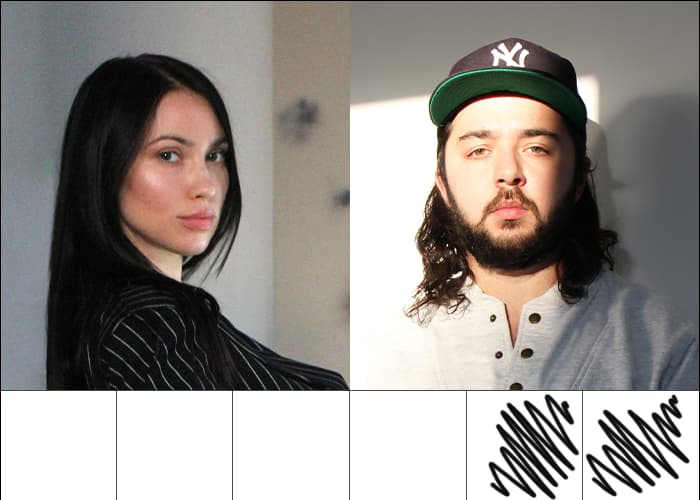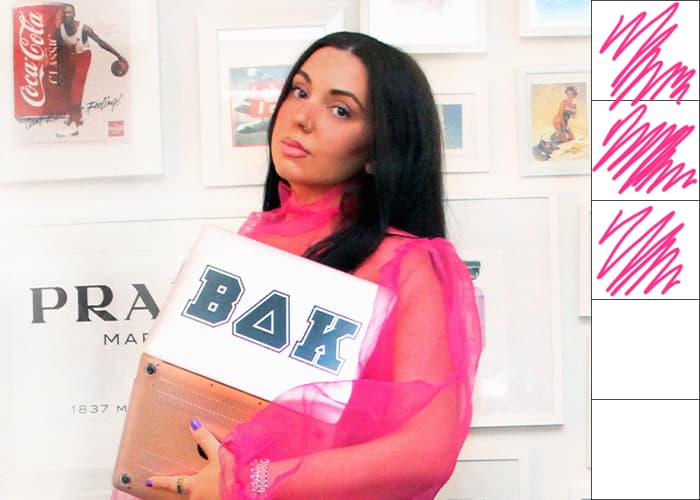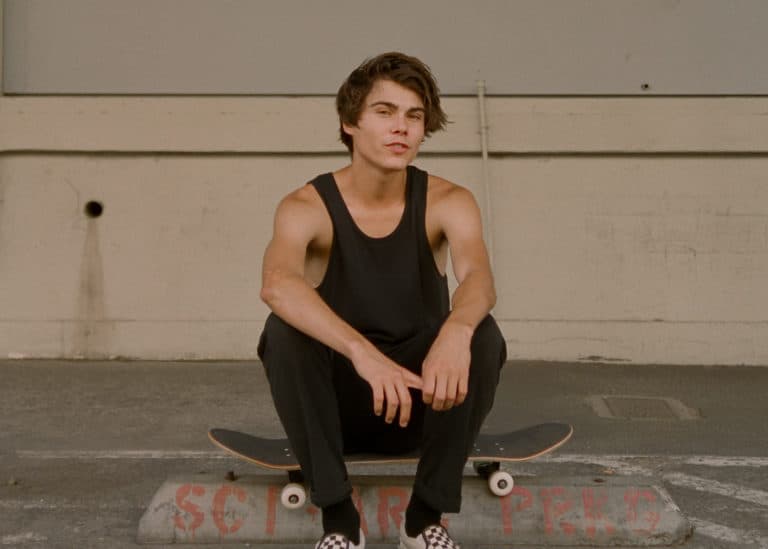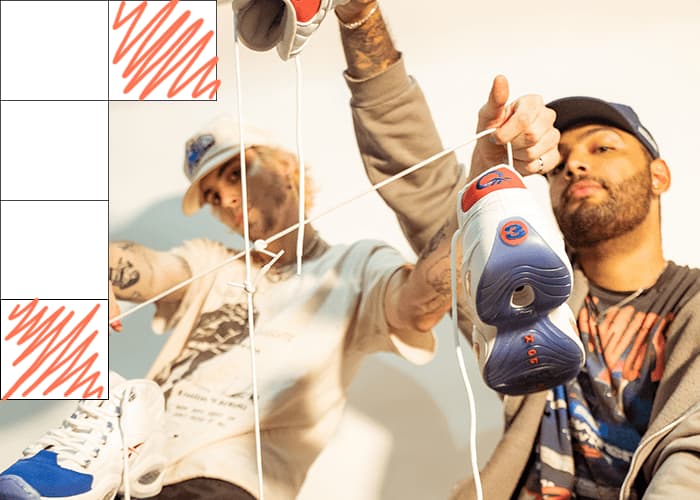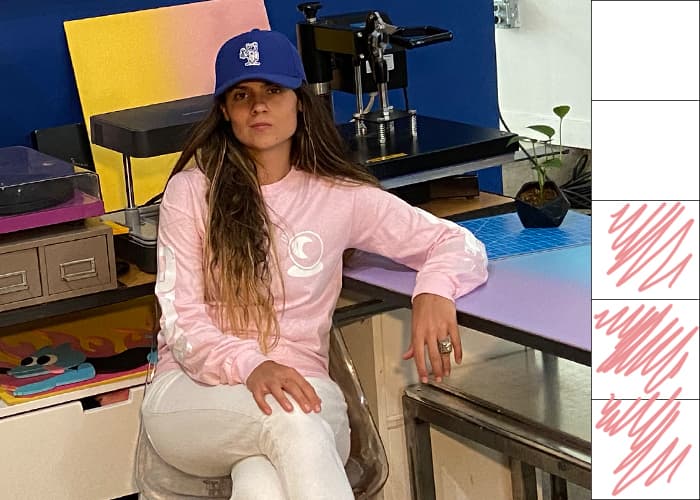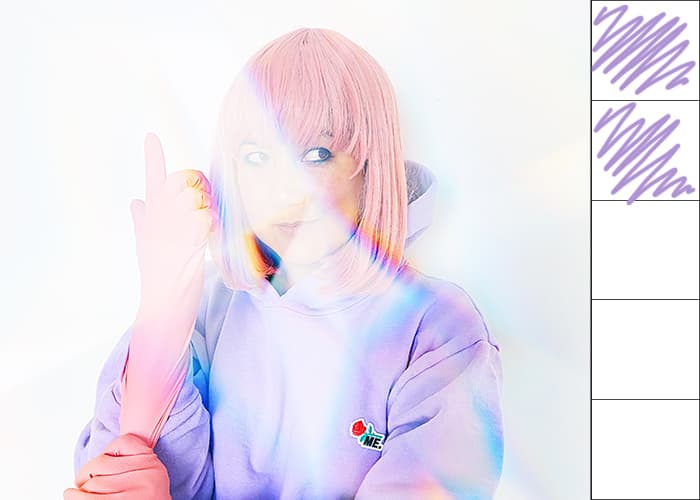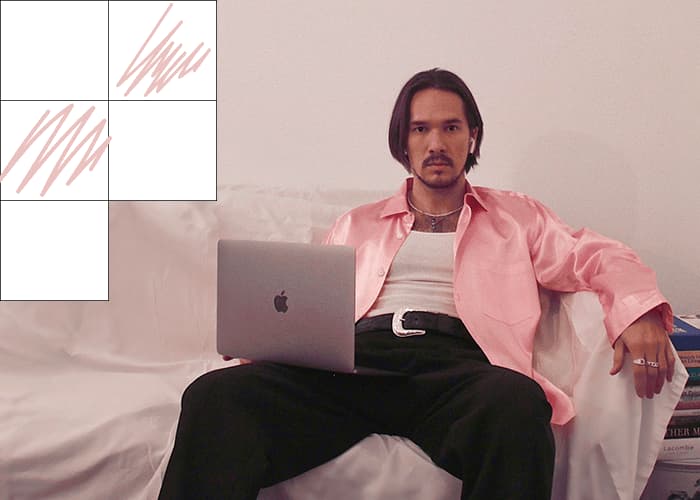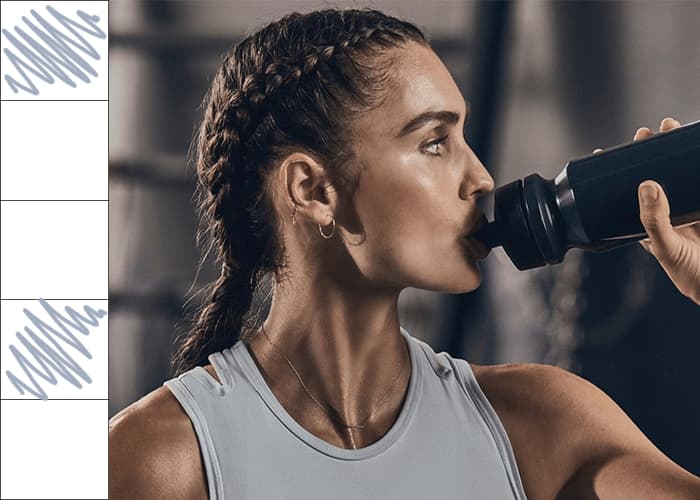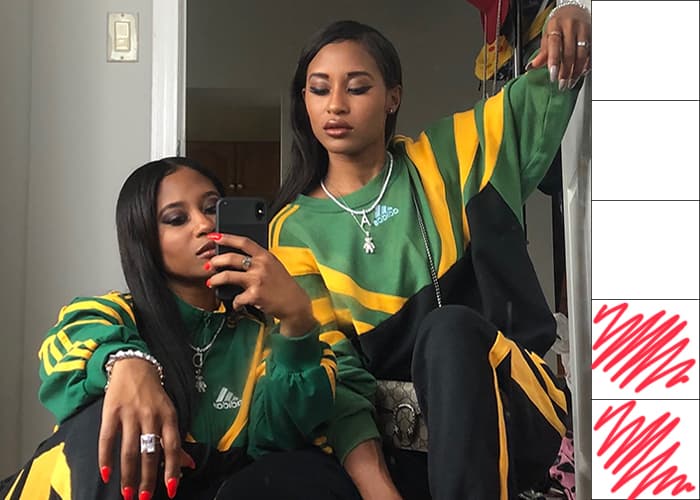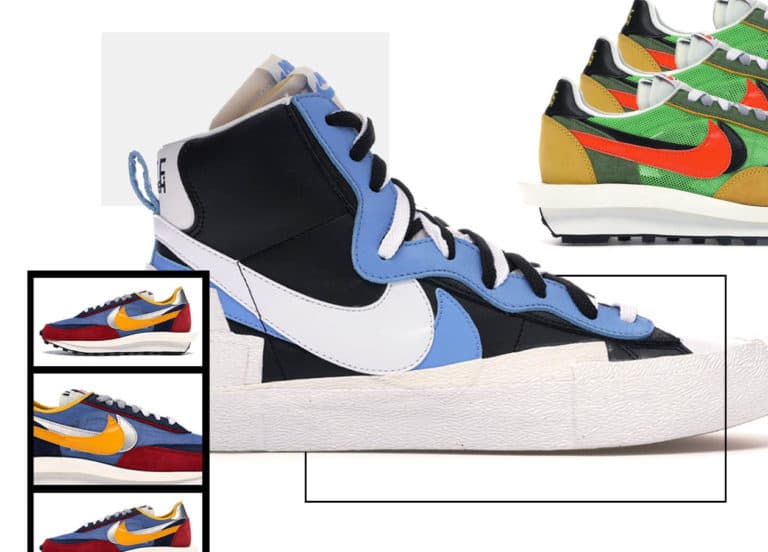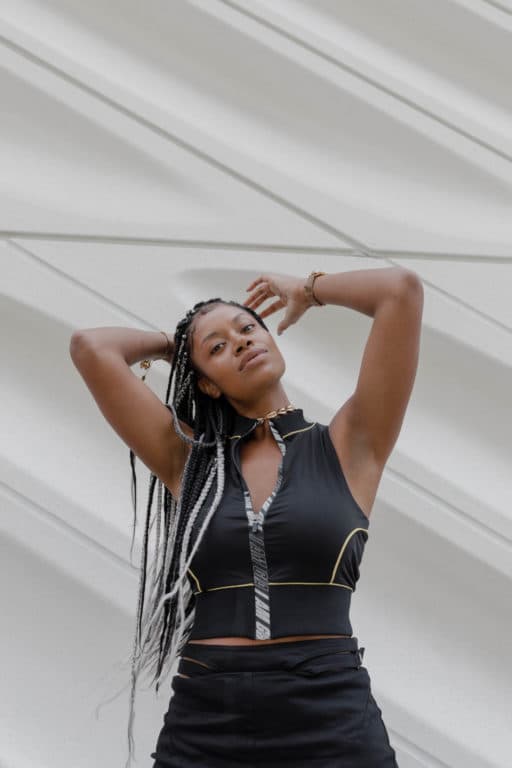
Editor’s Note: 2019 has been quite the year for Reese Cooper. The young designer has separated himself from the pack this year, being named a 2019 CFDA/Vogue Fashion Fund finalist with his menswear line being stocked in stores like Barney’s, RSVP Gallery, MR PORTER, and Selfridges. He even created a bespoke jacket for Kid Cudi that he wore during his recent Complex cover story. The buzz and success all makes sense when you spend the day with him. With a cigarette and matcha by his side, Reese is a relentless worker, constantly tinkering with ideas to take his eponymous brand to the next level in not only the quality of the pieces, but the story behind them. We talked all that and more while touring his Los Angeles studio.
This interview has been edited for brevity & clarity.
Ari Nonahal, StockX: Thanks for speaking with us today. Can you start off by introducing yourself?
Reese Cooper: I’m Reese Cooper. I’m a designer and creative director.
AN: Where are we right now? Can you break down how this is a one stop shop for everything that you do?
RC: We’re at my office and studio in Eagle Rock, Los Angeles. To me, this space fulfills every need that I have as a company. I have an office space, in-house photo studio, I do all my shipping out of here, and it is connected to the factory that makes everything with my business partner Charlie.

AN: Taking it back to growing up – you were born in the U.S. and then moved to EU. Can you give us a background story on that?
RC: I’m from Atlanta and then I moved to London when I was about 10 and lived there until I was 18, so most of my formative years were in London. That is really where I got into everything that I’m doing now.
AN: So, it had a huge impact on where you’re at now?
RC: Yeah, definitely. That complete culture shock of being in downtown Atlanta to moving to the suburbs outside London with grass fields everywhere. That was a huge difference. Then, I started exploring. The public transportation is really good and London is relatively safe as a city so my mom was cool with me going into town. That is where I found an interest in all this stuff.
AN: What was the first moment that sparked your curiosity with design?
RC: The first thing that really caught my attention was seeing Bape camo for the first time and wondering what it was. I started doing the research, figuring out there was a store, going there, and then I ended up interning there. That translated into design because I just sat there in their office all day and wondered why things cost so much money. If you have access to sit there all day and be hands on with everything while you are steaming or packing boxes or whatever (I was a 15 year old intern), you really get familiar with it. I started to put the value in perspective and then learn that the company has to make money too. I’ve always been super interested in how things are made, so seeing that as a tangible thing that you can wear made me want to explore into it. Then I got into clothes as a whole.
 AN: Was that always what you were interested in?
AN: Was that always what you were interested in?
RC: No, I’ve always been drawing and knew I would end up doing something design related forever whether it was architecture or object design. Clothing was just something I was personally interested in then I figured I could combine the two interests.
AN: Where did the interest stem from? How did you get so hands-on into making things?
RC: I have no idea where the interest came from. I’ve always just been super attracted to certain buildings or objects. And then again it’s a study into why I’m attracted to those things, doing the research and finding out more things I like based off of that.
AN: How much of that comes from curiosity versus necessity in your business?
RC: Learning how things are made definitely came from curiosity, but now learning how to do everything myself such as shooting all the photos comes from necessity. Being a company as small as I am, you can either pay to have all these things done or people charge a percentage of the sale for little things such as fulfillment or shooting product photos. That money really adds up when every dollar I make goes right back into this. So it’s definitely out of necessity that I learn how to do all this stuff myself, like learning how to retouch all the photos myself on Photoshop for the webstore, things like that. It’s definitely been a long three years of learning how to do all this stuff, but I’m just at the point where I can do everything I need. I’m pretty self reliant on everything.
AN: You even made all the furniture in here, correct?
RC: Yes, all the furniture here is hand-crafted out of Home Depot plywood ::laughs:: Home Depot gift cards if you know me around my birthday.
AN: Before you design, are there any certain rituals that you have in your creative process?
RC: Usually I’ll figure out the technical details here with the pattern maker and everyone else involved. When I’m actually designing, it’s almost never “let’s sit down and design for three hours”. Everything happens so reaction-based that the initial idea is either poorly drawn on my phone or I keep a notebook with me, and then I’ll spend time on it later and go back to it. I guess this space is where I finish the details, actually pick the fabrics, and move on from there. The initial ideas are never made here.
AN: How does your actual creative process unfold from there?
RC: If anyone else read my notes, they would have no idea what the hell was going on. It’s like random words or some scribbles on the notes app, because I can never actually draw the way I want to on my phone. I can understand exactly what it means and know how to translate it into pen and paper later, but the process is super all over the place. Everything plays off each other.

AN: Are you thinking of the imagery before the product?
RC: I think about how everything goes together at the same time. When I’m thinking about the fabric selection or cut of something, it’s often based on the landscape that we are going to be shooting in or the storyline that we are trying to build with the photos. Everything plays off each other. If I know we are shooting in this type of scenery trying to portray this message, then I know we’re going to hit this color palette and cut it this way. Nothing is ever an afterthought.
AN: You’re super hands on with all your lookbooks, correct?
RC: Yeah, I’m pretty much doing everything. If I’m not the one taking the photos, I’m there for every aspect of the photoshoot. I’m hands on with everything.
AN: So much of what you do is about storytelling and cultivating a community, do you look at this space as a retreat from that?
RC: Yes and no – it really depends on the day. This place can either represent all the work that I have to do where it’s 20 hour days of packing boxes and the floor is unable to be seen, or on days like this where it’s super nice and clean and there’s time to do things, it is super nice to be here.
AN: How do you define personal space?
RC: Personal space to me means having your own secluded space. Having a door I think is the biggest thing. My first apartment in LA, I didn’t have a bedroom door. I had a roommate and we put a half-ass curtain up in between our two beds. This is the first time I’ve had personal space in a while – having my own area. It’s a place that I can shut my door and be here til 3 AM playing music loudly and do what I need to do, but also be stressed out over a bunch of things and not have to talk to people. It’s a super important thing to have.

AN: When did you last go home?
RC: I’ve slept at home every night this week! Which I am super into. Sleeping at home every night is not always the case.
AN: Do you sleep here a lot?
RC: I have a couch in the other room. Work starts at 7 AM, so if I’m working until 4, what the fuck is the point of going home?
AN: Do you think there is a benefit of blurring that line between personal and work?
RC: No, it’s horrible. It’s absolutely awful. That’s why I was so happy to leave my last apartment, because when your bed is next to a pile of boxes that you have to deal with in the morning for your job, having no separation is terrible. It’s nice in crunch time, but it isn’t sustainable. Being able to shut this door and go home is super nice. I’m just getting to enjoy that sometimes.
AN: What’s your most meaningful item in this space?
RC: There are a few things – I got this manual camera recently, which is like a personal accomplishment for me. Now that I’m trying to shoot all my own photos, I’m trying to actually learn how to shoot my own photos. This is the first camera that I’ve had that is fully manual. I really have to put in the work and learn how to do it. I shot an editorial for the Spring collection with the model, Alberto, looking like he was falling from the sky and this was the first time I ever shot on this thing and began to figure it out. And then I shot most of the latest campaign on this. So having that three year build up, now it’s time to really learn how to do this, and this is the camera I got. I’ll probably hold on to this forever.
AN: Do you like to consider yourself a designer? Or do you like to call yourself more of a storyteller?
RC: I don’t really call myself anything. It’s whatever label applies to whatever project we are dicussing at the time.

AN: It seems like each collection is going through a chapter of your life. Can you walk us through HitchHiking, Fever Dream, and How A Letter Travels collections, and how they’re connected?
RC: Yeah, whether it’s hypothetical or based on something that I’ve experienced. Everything follows a singular narrative and it’s building up its own little universe. The story line for the menswear that shapes the whole universe of the brand is essentially starting with the first collection Lone Pine, it sets the scene. All the imagery and product that came out of that paints a vivid picture of the metaphorical place. And then Fever Dream, the Spring collection, was super aggressive pastel colors, brighter, differently silhouettes, and that was like the “freak out” moment. HitchHiking is just getting out of that. Following that, for “How A Letter Travels”, I was super inspired by vintage postcards for this one. It was based on sending letters home from the journey.
AN: What was the “freak out” moment with Fever Dream?
RC: It was based around very first world problems, like the business working season one. It’s like okay, now I have to do this again, how do I manage to do all this stuff? It’s a tricky thing with clothes because you have your whole life to put out the first collection and then you have three to four months to do it again. When two of those months you don’t even know what the orders were for the first one, you don’t know if you have money to work with, it’s super difficult. So that caught me off guard early on.
AN: Does being so hands on keep you close to your original mission?
RC: I think I’m hands on with everything almost out of necessity right now. It’s pretty evenly split between necessity and my love for it. I have no issue with people who don’t touch their things, because if you are able to find a team that you trust with the vision, then that is much more valuable than if you can sew anything you want. It’s much more valuable to have a team that you can rely on, that gets it. That’s what I’m working on now. At the end of the day, I can’t do it all myself. So it’s like, now, I’m doing six collections a year now and doing things like the CFDA award and travelling so much for stores. It’s impossible to get everything done that needs to get done myself. As hands on as I love to be with this, it’s time to start bringing in people.

AN: You’ve talked a lot about how you’re feeling at that time in your life that goes into creating a collection. Does that process feel therapeutic for you?
RC: Yeah, definitely. I think it’s the same with any form of creative expression. Like it would be a little crazy if a musician wasn’t putting what they were feeling into their music, or if a writer wasn’t putting themselves personally into something. So the fact that I am designing and making all of this stuff, and it is my brand, of course it’s going to be me in it. Whether I want it to be literal or there just be little hints of it. There is definitely how I’m feeling at the time I’m designing stuff going into everything. It could be something as simple as how I want the pants to fit that represent something completely different. It is definitely therapeutic. It’s a way to look at everything through a different lens and document it all, time stamp it.

AN: How do you know when a product is done?
RC: It’s never done.
AN: Nothing is ever done for you?
RC: That’s something I’m working on. I used to be super 100% it’s done when everything feels right, but now I’m doing so many things that those last details that you worry about only account for 1% of the thing as the whole. Also, I realized that nobody else knows what’s inside your head. If it looks wrong to you but it’s the first time anyone else is seeing it, no one knows you hit a wrong note when your playing a song for the first time. It eats you up, but it’s something I’m working on. I’m learning to do more and learn from the mistakes and put it into the next thing and keep it pushing faster, instead of fixating on one thing forever and then having to get into time crunches. It’s also just learning how to manage my time business wise now, because of that issue.
AN: It seems like a lot of your public work is centered around community, connection, and demonstration. Do you feel like upcycling old pieces changes the meaning of your work?
RC: I don’t know if I would even necessarily center it as part of a main thing in design of the brand, it’s just something we should be doing. It’s never like “let’s make sure to do it like this.” It’s kind of something that just comes out of it. Like the nature of this factory and my studio, there is always old stuff laying around. For quick tests, it’s the easiest thing to do. Also, there is so much stuff that doesn’t get used. I just have an issue with throwing things away. If there is an opportunity, like say I have 40 sweatshirts thats have a tiny hole in them and I can’t sell them, but they still work. They are sweatshirts. We will just do one of the days where people come through and we can print on them or dye them. I would much rather have that happen than let things go to waste.
AN: Do those interactions with the community influence your work at all?
RC: Yes and no. The work itself – I know what I’m doing. But what I get out of it is a really nice way to spend an afternoon with friends, as well as people that I wouldn’t meet normally. I’ve met a lot of friends who came through on one of those days. It’s also a cool way to see the kids who are fans of this world going on over here, interacting and meeting people that they are fans of too. I have a lot of friends in music who will come through and it’s just like, when everyone is in the same parking lot, nobody feels any sort of intimidation. Like “Oh, that’s a famous person. I don’t want to talk to them”. When you are using the same tie-dye bucket, we are all friends here.

AN: Do you think it benefits your brand to invite so many people to your space and be so transparent with them?
RC: Yeah! I never really put on an act with anything that goes on here. So if you want to come through, you are going to see exactly what goes on over here, and I have no issue with it.
AN: As someone who has been so transparent and done so much of learning based on your own curiosity, do you feel a responsibility to bring that knowledge to other people?
RC: Absolutely. What’s the saying? Each one, teach one. If I learn something there is no reason that someone else doing this shouldn’t know it. There is no weird secrets to this because I don’t consider anyone a competitor. At the end of the day you are just racing yourself, so whether you know how to wash a shirt a certain way, there is a lot of different meaning behind what you are doing and what I’m doing, so I have no issue with it.
AN: If you could give your younger self advice, what advice would you give?
RC: Value sleep more.

AN: You’ve mentioned your dream goal isn’t to work with specific people but to collaborate with great brands and companies, can you elaborate on that more?
RC: Yeah, so when asked that question, it is never one person or company in mind that I was like, “I really want to work with XYZ celebrity and do something with this person”. The dream client for me is a brand that has access to stuff that I’m a fan of that I don’t have. There are a couple of heavy-hitter staple american workwear brands or outerwear companies that have access to tech and fabrics that I don’t. I would love to work with those teams and learn something from that scale of an operation much more than I’m interested in making a dress for a singer.
AN: Would you say that you are designing for yourself and not a client or audience?
RC: Yes and no. Everything that I make I would wear. I don’t want to make anything that’s scary. Obviously my sense of style has changed throughout making this. But also, at the end of the day it is a business. If you are making stuff for yourself and other people don’t like it then you are out of business. You have to play both fields.

AN: You recently collaborated with us [StockX] for Paris Fashion Week. What was your biggest take away from that?
RC: That was something crazy to see because I have done so many of those little workshops in LA and we get a handful of people who come through. I never wanted it to be a huge situation at the office because this is where all my stuff is. But doing it in Paris and just seeing how many shirts we printed, I think we printed 400 t-shirts? Like in the three-four hour window that we were there. It was really crazy thing to see how many people care.
AN: Walk us through exactly what you did in Paris for the activation.
RC: In Paris, I basically did a version of what I do in the parking lot at the office sometimes. It started off with a couple of friends and we started inviting more people who wanted to be there and called it “Arts and Crafts Day”. Just super on the nose, nothing too serious, like just come through and make stuff. It was a good way to use the materials we were not using anymore and have fun with it. In Paris, we made some custom t-shirts for it and invited people down there. It was a good way to bring everyone together.
AN: Was it interesting being on an international scale, having that much of a cultural collision?

RC: Yeah, living in London for the formative years, I’m super familiar with Paris and that whole circle and scene. But when you step away from that for three years and lock yourself in a garage and work, you get used to not seeing that stuff everyday. Being able to step away to work and then come back and see what’s going on out there is super cool to me.
AN: What’s something that you wish more people knew about you?
RC: Something that people should know is that it is really me involved in everything. There is no glamourous, easy side of this. If you want to do this then you are really in it. I’m at the studio at 2 AM editing product photos that I took on some printer paper on the floor because I don’t have a big studio. You really have to make due with what you have.
AN: What’s next for you? Can you talk about any upcoming projects?
RC: So now I’m in the CFDA Vogue Fashion Fund. I think what comes next after that is that once that while that program is going on, I’m doing a women’s collection for Spring in NY in September. I’m working on a capsule for SSENSE. In January, I’m looking to do something a little bit more larger scale for the men’s line in Paris.
Stay tuned for even more behind the scenes access with Reese Cooper, as StockX followed him and his team in preparation for their “Waters Edge” presentation at New York Fashion Week.



